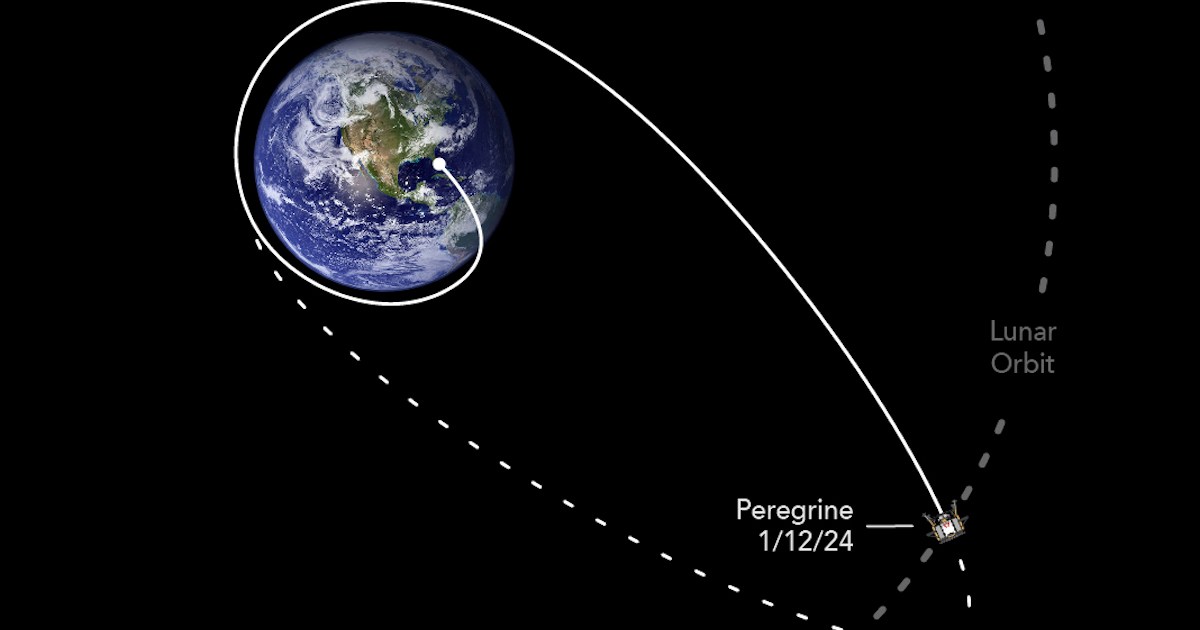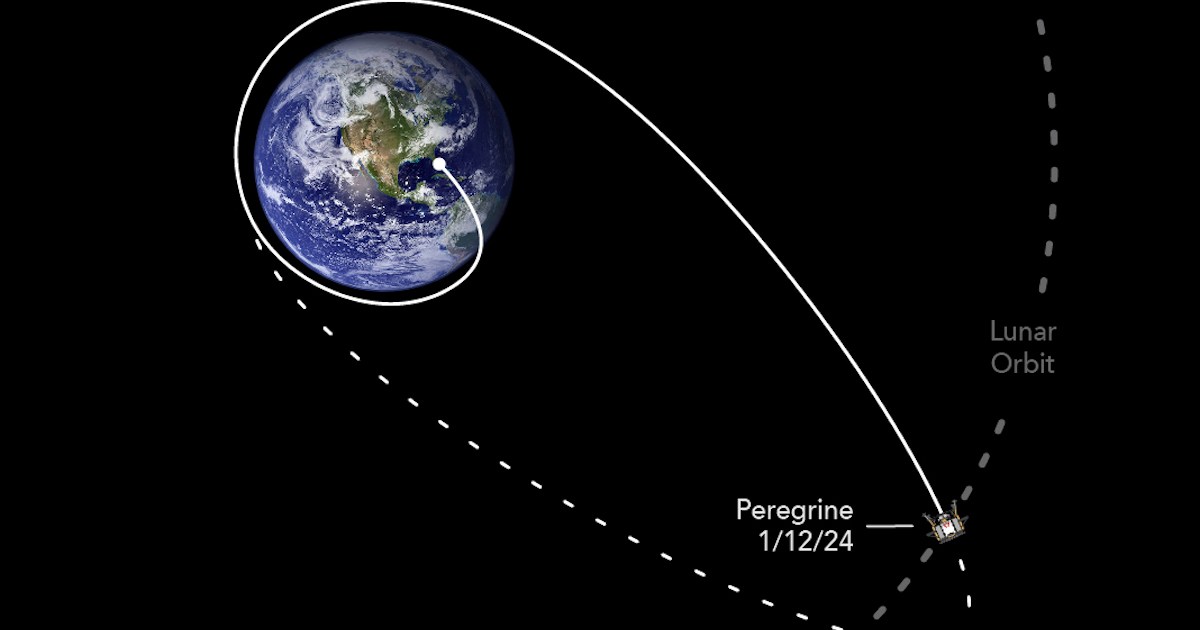
The Peregrine lunar lander will be unable to do what it says on the tin, though the troubled spacecraft has nevertheless surprised many observers by continuing to fly way longer than expected.
But Pittsburgh-based Astrobotic said on Sunday that it expects its spacecraft to burn up in Earth’s atmosphere in the coming days, bringing the troubled mission to a fiery close.
Peregrine marked the first attempt at putting an American lander on the moon since the final Apollo mission in 1972, and was also aiming to become the first private endeavor to achieve the feat.
But a propellant leak shortly after launch from the Kennedy Space Center in Florida on January 8 meant the NASA-backed spacecraft and its 21 payloads would be unable to reach the lunar surface next month, as originally planned.
Over the last week, the team at Astrobotic has been keeping everyone up to date with the latest happenings regarding the beleaguered spacecraft, explaining that the leak had probably been caused by the failure of a valve to reseal itself.
Astrobotic said on social media on Saturday that Peregrine had reached lunar distance, but the disruption to the mission caused by the propellant leak meant that the moon wasn’t there to meet it.
It initially thought the spacecraft would shut down a few days after launch, but subsequent updates on social media revealed that the rate of the propellant leak had slowed, giving Peregrine more time in space and Astrobotic the opportunity to power up some of the payloads.
The team said on Sunday that it had “designed and built hardware, avionics, software, and system architectures that have all performed as expected in space,” adding that “all payloads designed to power on and communicate did so, and even achieved science objectives.”
The spacecraft could potentially operate until around January 22, giving the team even more time to gather data, some of which will prove useful for its Griffin lunar lander mission currently scheduled for November.
Looking toward the end of the mission, Astrobotic said that as this was a commercial endeavor, the final decision regarding Peregrine’s flight path was in its hands. “Ultimately, we must balance our own desire to extend Peregrine’s life, operate payloads, and learn more about the spacecraft, with the risk that our damaged spacecraft could cause a problem in cislunar space,” it said. “As such, we have made the difficult decision to maintain the current spacecraft’s trajectory to re-enter the Earth’s atmosphere. By responsibly ending Peregrine’s mission, we are doing our part to preserve the future of cislunar space for all.”
Astrobotic will host a teleconference with NASA at noon ET on January 18 to share some “major mission updates,” and the event will be live streamed on select NASA channels.
Editors’ Recommendations
Services Marketplace – Listings, Bookings & Reviews
